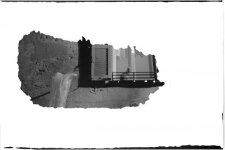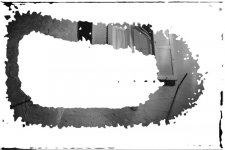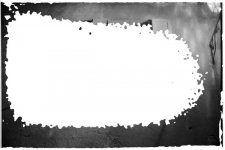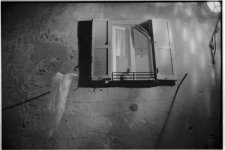brbo
Well-known
Hi!
Currently I have a Microtek 120tf (4000dpi medium format scanner) and a Minolta DiMage 5400 v1 (5400dpi small format scanner). Now, I'm very happy with my scanners. Both are probably at least as good as Nikon counterparts (Minolta is probably even noticeably better).
If I was a BW shooter I wouldn't even think of replacing those two scanners, but I use colour film 95% of the time and I must admit that sometimes I miss the lack of ICE in my Microtek 120tf. So, I've been thinking that I could probably get a Nikon Coolscan 8000 ED if I sold my two scanners.
I've been reading about CS 8000 and I would like some input from people who've used it (or even have some first hand knowledge of how this Nikon compares to my scanners).
So far, I gather that:
a) Nikon would produce somewhat harsher/grainier files (LED light source vs. cold cathode (additionally, my Minolta even has a built-in grain dissolver)); what is your opinion on that?
b) CS 8000 ED needs "fine mode" enabled otherwise you get banding; how slow does that make it? I always scan at full resolution and with 16x multi-pass (but don't use multi-exposure), my both scanners are fairly slow at that settings, so much slower with Nikon in "fine mode" would probably not be welcomed.
c) Holders. I must use glass holders with ANR glass for medium format. Nikon has two glass holders. The cheaper one doesn't seem to have ANR glass. Am I wrong? Is the glass easily replaceable with ANR glass? Does the more expensive, rotating holder, have ANR glass for both glass plates?
d) I scan panoramic format on 135 film. I scan it in my Microtek in a glass holder. I don't need any film masks or whatever, I just put my film between two glass plates and scan the whole area with sprocket holes included. I've heard that you need film masks on Nikon otherwise you get "light leaking" from the unmasked sides into the film area. If that is so, would that mean that scanning film with sprocket holes included is not possible with Nikon? Like this...


e) Is there any way to scan into the unexposed edge of 120 film on Nikon 8000? My Microtek 120tf can get just a mm or two into the edge, I wish it could scan the whole width of the film.
f) Any other thoughts, opinions and comments are welcome.
Thanks!
Currently I have a Microtek 120tf (4000dpi medium format scanner) and a Minolta DiMage 5400 v1 (5400dpi small format scanner). Now, I'm very happy with my scanners. Both are probably at least as good as Nikon counterparts (Minolta is probably even noticeably better).
If I was a BW shooter I wouldn't even think of replacing those two scanners, but I use colour film 95% of the time and I must admit that sometimes I miss the lack of ICE in my Microtek 120tf. So, I've been thinking that I could probably get a Nikon Coolscan 8000 ED if I sold my two scanners.
I've been reading about CS 8000 and I would like some input from people who've used it (or even have some first hand knowledge of how this Nikon compares to my scanners).
So far, I gather that:
a) Nikon would produce somewhat harsher/grainier files (LED light source vs. cold cathode (additionally, my Minolta even has a built-in grain dissolver)); what is your opinion on that?
b) CS 8000 ED needs "fine mode" enabled otherwise you get banding; how slow does that make it? I always scan at full resolution and with 16x multi-pass (but don't use multi-exposure), my both scanners are fairly slow at that settings, so much slower with Nikon in "fine mode" would probably not be welcomed.
c) Holders. I must use glass holders with ANR glass for medium format. Nikon has two glass holders. The cheaper one doesn't seem to have ANR glass. Am I wrong? Is the glass easily replaceable with ANR glass? Does the more expensive, rotating holder, have ANR glass for both glass plates?
d) I scan panoramic format on 135 film. I scan it in my Microtek in a glass holder. I don't need any film masks or whatever, I just put my film between two glass plates and scan the whole area with sprocket holes included. I've heard that you need film masks on Nikon otherwise you get "light leaking" from the unmasked sides into the film area. If that is so, would that mean that scanning film with sprocket holes included is not possible with Nikon? Like this...


e) Is there any way to scan into the unexposed edge of 120 film on Nikon 8000? My Microtek 120tf can get just a mm or two into the edge, I wish it could scan the whole width of the film.
f) Any other thoughts, opinions and comments are welcome.
Thanks!





